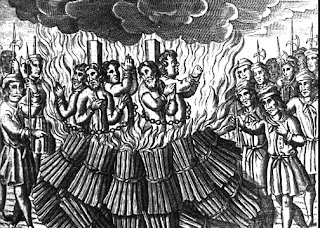The Medici family name is known to many casual readers of history. Let's talk about the man who started it all.
Born on 27 September 1389, Cosimo di Giovanni de' Medici was described by Edward Gibbon as:
Born on 27 September 1389, Cosimo di Giovanni de' Medici was described by Edward Gibbon as:
...the father of a line of princes, whose name and age are almost synonymous with the restoration of learning; his credit was ennobled into fame; his riches were dedicated to the service of mankind; he corresponded at once with Cairo and London; and a cargo of Indian spices and Greek books were often imported in the same vessel. [The History of the Decline and Fall of the Roman Empire]
Cosimo never became pope (like three later Medicis did), but he did rise to prominence in Florence due to his wealth. He operated a powerful bank, using the money this brought him to influence politics and arts. Although he never overtly "ruled" Florence, he was a de facto ruler because politicians functioned according to his whims. The man who later became Pope Pius II said "Political questions are settled in [his] house. The man he chooses holds office... He it is who decides peace and war... He is king in all but name."
His birthday was not his birthday. He was actually born on 10 April. He was born with a twin, called Damiano. His parents named their children after the twin saints Cosmas and Damian. Later, Cosimo would celebrate his birthday on the feast day of those saints, 27 September. (Damiano died shortly after birth.)
In 1410, he made a loan to Baldassare Cossa, who used it to make himself a cardinal. When he later became (the anti-) Pope John XXIII, he repaid Cosimo by making the Medici Bank the official bank of the Vatican. Cosimo used this connection well, until 1415 when John XXIII was deposed. After that, the Medici Bank had to compete with other banks.
In 1415 he married Contessina de' Bardi, a daughter of the family that once controlled the powerful Bardi bank, before its collapse in 1345 (the subject of one of the very first entries in Daily Medieval, and a factor in the novel portrayed on this page to the right). Although their family bank had collapsed, the family was still prominent in Florence. He died on 1 August 1464, at the ripe age of 75, leaving behind a family line that would remain powerful for generations.














